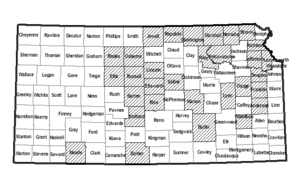Southern Bog Lemming
Southern Bog Lemmings are colonial and inhabit communities of thick matted ground cover with high overhead vegetation in both forest and grassland, but are not restricted to bogs. Vegetation surrounding springs, damp to wet grasslands, and marshes are their favored habitat. From here, they move out into upland grasslands and other surrounding communities.
The home range of this mammal is limited. They are active in winter and summer, and in areas of dense overhead cover, they are frequently active during the day. Their nests are made 100-150 mm below ground, under logs, or above ground among bunches of grass, generally above ground in summer and below ground in winter. The female has 1-7, usually 3, young and may have 3-4 litters a year. They feed on stalks and blades of green grasses, and rarely, invertebrates. The lemming is a good source of food for snakes, hawks, owls, shrews, weasels, foxes, coyotes, and bobcats. Average longevity for this mammal is less than one year.
Two subspecies of the Southern Bog Lemming occur in Kansas; Synaptomys cooperi gossi in the eastern half of the state and Synaptomys cooperi paludis in a small area in the southwestern part of the state.








